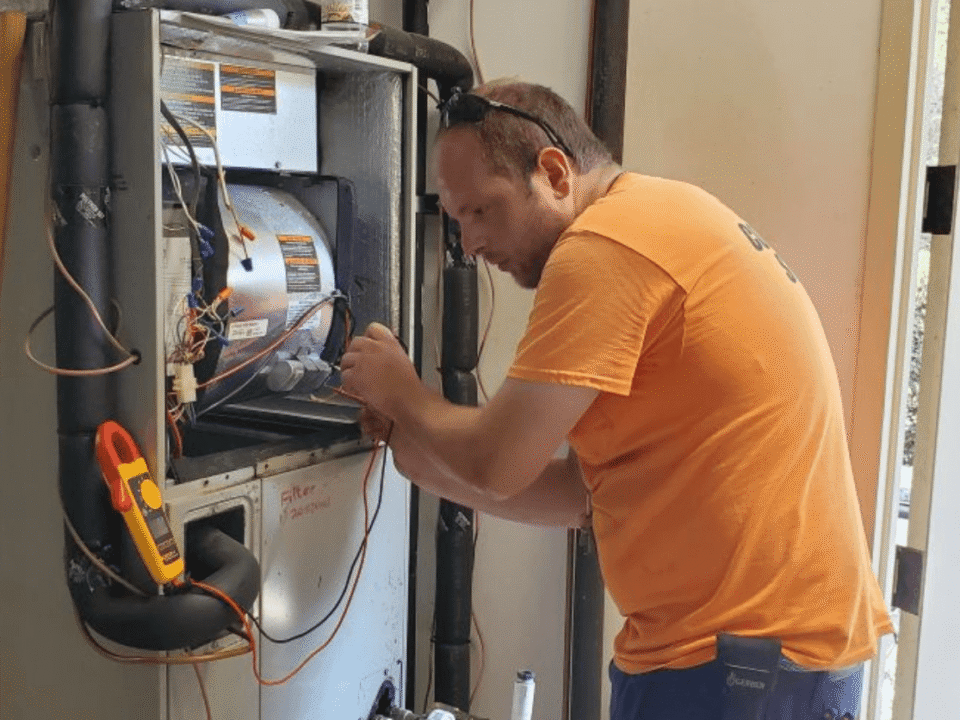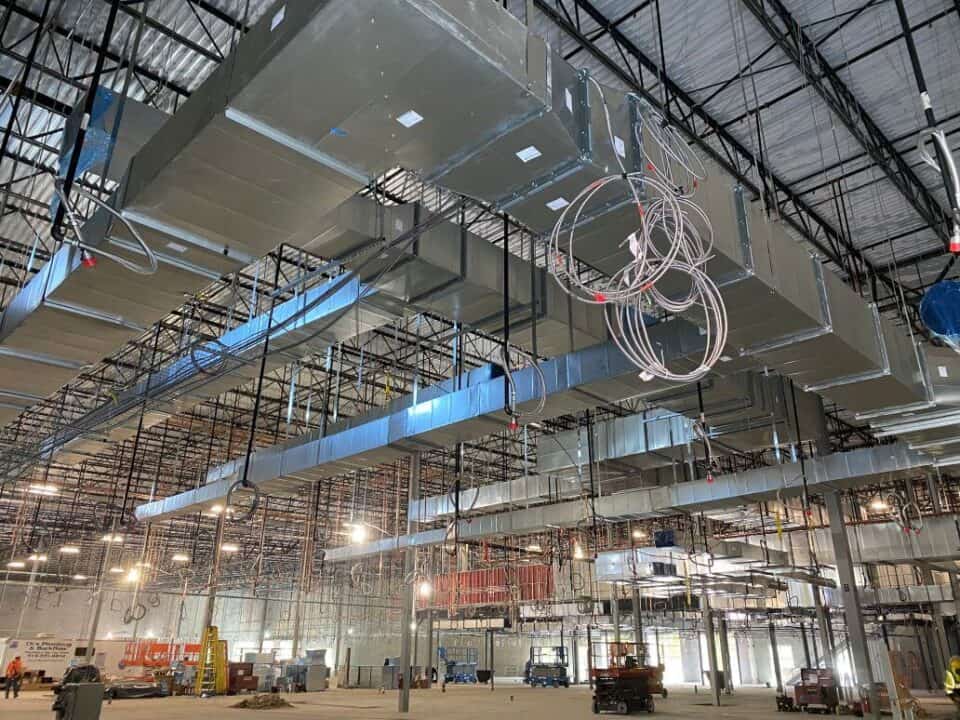
Understanding Commercial Boiler Systems: A Complete Guide
September 11, 2025
Why is Water Leaking from My Furnace?
October 9, 20258 Common Heating Problems in Commercial Buildings and How to Solve Them
Learn about common heating concerns for commercial spaces
When colder weather rolls into the Triangle area, maintaining a comfortable indoor climate in commercial buildings becomes critical for employee well-being, productivity, equipment protection, and overall energy efficiency. At Carolina Commercial Systems, we’ve serviced heating systems across Raleigh, Cary, and Durham for decades, and we’ve seen it all, from freezing cold offices to skyrocketing energy bills due to faulty systems.
This post dives into the most common heating problems commercial buildings face and provides clear, actionable solutions to keep your building warm and your business running smoothly all winter long.
1. Uneven Heating Across Spaces
One of the most frequent complaints from property managers and tenants is uneven heating. Some areas feel like a sauna, while others remain cold and uncomfortable. This issue is particularly common in larger buildings with multiple zones and open floor plans.
Solutions:
- Upgrade to a modern zoning system: Smart zoning controls allow for better customization and distribution of heat based on actual usage and occupancy patterns.
- Inspect and seal ducts: Leaky ducts can lose up to 30% of heated air. A professional inspection and duct sealing can significantly improve performance.
- Balance the airflow: Our HVAC professionals can perform air balancing to ensure even distribution throughout the building.
- Reevaluate thermostat placement: Moving thermostats away from heat-generating equipment or drafty areas can help readings be more accurate.
2. Short Cycling (System Turns On and Off Frequently)
Short cycling puts immense stress on heating equipment, leading to premature wear, increased energy bills, and reduced comfort. It also suggests underlying inefficiencies.
Solutions:
- Ensure proper unit sizing: An HVAC contractor can conduct a load calculation to determine if your system is appropriately sized.
- Routine maintenance: Replace air filters monthly during heating season and schedule regular HVAC tune-ups.
- Check and replace thermostats: An HVAC contractor can assure you that your thermostat is set up properly for the type of HVAC system that you have.
- Clear vents and returns: Ensure vents aren’t blocked by furniture, equipment, or debris.
3. No Heat or Insufficient Heat
A complete lack of heat is a critical issue that demands immediate attention. Whether the system is blowing cool air or not running at all, downtime in commercial environments can be costly.
Solutions:
- Professional diagnostics: These types of issues often require expert diagnostics to pinpoint the problem without guessing.
- Thermostat calibration: Sometimes, recalibrating or replacing the thermostat can restore proper function.
- Electrical inspection: Checking the breaker panel and fuses is a quick first step.
- Emergency HVAC services: In urgent cases, it’s essential to call a licensed HVAC contractor to avoid further damage or liability risks.
4. Unusual Noises from the System
Clanking, banging, whistling, or grinding noises can indicate mechanical problems or airflow restrictions. They’re disruptive and may indicate serious issues if ignored.
Solutions:
- Schedule an inspection: Mechanical parts may need tightening or replacement.
- Lubricate moving components: Bearings and motors need periodic lubrication to prevent wear and noise.
- Install duct silencers or insulation: These can reduce sound and manage duct expansion noises.
5. Thermostat Control Issues
A malfunctioning thermostat can lead to irregular temperature control, affecting comfort and energy usage.
Solutions:
- Upgrade to smart thermostats: Programmable thermostats can adapt to schedules and occupancy for optimal control.
- Professional placement assessment: Relocating a thermostat may be necessary for accurate readings.
- Ensure secure wiring and connectivity: Technicians can check for faulty wiring or Wi-Fi issues in smart systems.
6. Increased Energy Bills
A sudden spike in utility bills during winter could mean your heating system is operating inefficiently.
Solutions:
- Conduct an energy audit: A building energy assessment can reveal inefficiencies and areas for improvement.
- Replace aging systems: Older systems are often less efficient.
- Regular tune-ups: Planned maintenance ensures systems run at peak efficiency.
- Improve building insulation: Window sealing, door sweeps, and attic insulation can drastically reduce heating load.
7. Poor Indoor Air Quality (IAQ)
IAQ tends to decline during the winter because buildings are sealed to conserve heat. Without proper ventilation, pollutants and allergens accumulate.
Solutions:
- Install air purification systems: UV filters, HEPA filters, and ionizers can help maintain a healthy indoor environment.
- Maintain humidity control: Use humidifiers to keep levels between 30%–50%, reducing static and respiratory issues.
8. Delayed or Inconsistent Heating Startup
Some commercial heating systems experience long delays before they begin heating, or they may fail to maintain consistent output after startup.
Solutions:
- Reprogram schedules: Ensure your thermostats are correctly set for your business hours.
- Schedule a full furnace cleaning: Regular servicing of burners and heat exchangers helps restore reliable performance.
- Replace faulty sensors: Flame sensors and igniters are common failure points that can be replaced relatively easily.
How Planned Maintenance Helps
The best way to avoid most of these problems is through regular commercial HVAC maintenance. Planned maintenance agreements include seasonal inspections, cleanings, and tune-ups that keep your system running efficiently and help you catch small issues before they become major repairs.
Benefits of our Commercial HVAC Maintenance Plan:
- Lower energy costs
- Longer equipment lifespan
- Fewer emergency repairs
- Better comfort for employees and customers
- Compliance with warranty requirements
Choosing the Right Commercial HVAC Contractor
If you’re a property manager or business owner in the Triangle area, choosing a reliable HVAC partner is crucial. Look for contractors who:
- Specialize in commercial systems
- Are licensed and insured
- Offer emergency and scheduled services
- Have strong references from other Raleigh businesses
- Understand the unique needs of North Carolina weather
We take pride in being the go-to commercial HVAC experts in the Raleigh area. From office buildings and schools to restaurants and industrial spaces, we’ve got the experience and local knowledge to solve your heating problems fast and efficiently.
Don’t wait until it’s too cold to act. Schedule your HVAC inspection today and keep your commercial space comfortable all winter long.



